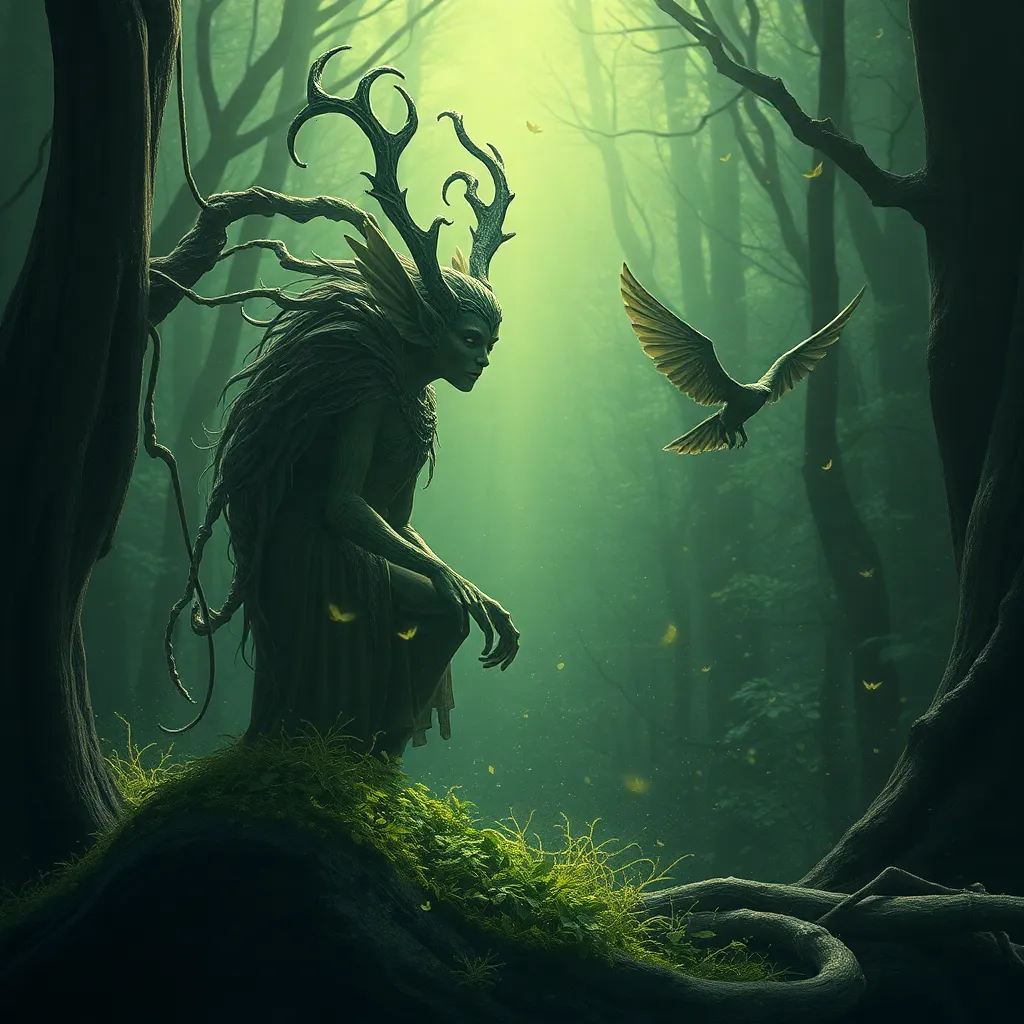Hidden in the Himalayas: The Yeti Myth in Tibetan Buddhism
I. Introduction
The Yeti, often referred to as the “Abominable Snowman,” has captured the imagination of people worldwide, becoming a staple of popular culture. From movies to literature, the Yeti’s mysterious allure evokes wonder and curiosity. However, beyond the sensationalized portrayals lies a rich tapestry of beliefs and narratives rooted in Tibetan Buddhism.
In Tibetan culture, the Yeti is not merely a mythical creature but a significant spiritual symbol intertwined with local cosmology and beliefs. This article aims to explore the origins, significance, and modern interpretations of the Yeti myth within the context of Tibetan Buddhism, shedding light on its enduring legacy in the Himalayas.
II. The Origins of the Yeti Myth
The Yeti myth is deeply embedded in the historical context of Himalayan folklore. Stories of this elusive creature have been passed down through generations, often embellished with cultural nuances and spiritual significance.
A. Historical context of the Yeti in Himalayan folklore
The Yeti is believed to have originated from the oral traditions of the indigenous peoples of the Himalayas. For centuries, local tribes have told tales of a giant, ape-like being that roams the mountainous regions, often depicted as a guardian of the sacred lands.
B. Early accounts and sightings of the Yeti
The first recorded sighting of the Yeti by Westerners can be traced back to the 19th century. Explorers and mountaineers, such as Andrew Waugh and Sir Edmund Hillary, documented encounters and footprints that sparked global interest in the creature. These accounts, although anecdotal, fueled the myth’s growth in Western culture.
C. The evolution of the Yeti myth in Tibetan culture
Over time, the Yeti has evolved from a mere folklore figure to a complex symbol within Tibetan culture. Many communities view the Yeti as a protector of the environment, embodying the spiritual connection between nature and humanity.
III. The Yeti in Tibetan Buddhist Beliefs
In Tibetan Buddhism, the Yeti transcends its role as a mythical creature and emerges as a spiritual emblem that resonates deeply with Buddhist teachings.
A. The Yeti as a spiritual symbol
The Yeti is often interpreted as a guardian spirit, representing the intertwining of the physical and spiritual realms. Its presence is seen as a reminder of the importance of living in harmony with nature.
B. Connections between the Yeti and Buddhist teachings
The Yeti is linked to concepts such as impermanence and the search for enlightenment. Just as the Yeti eludes capture, so too do the ultimate truths of existence remain elusive, prompting practitioners to look beyond the material world.
C. The Yeti’s role in local cosmology and mythology
Within local cosmology, the Yeti is often associated with sacred mountains and spiritual sites. It is believed that the creature inhabits these areas, serving as a protector of the land and a bridge between the human and divine.
IV. The Yeti and Tibetan Monasticism
Tibetan monasteries have historically engaged with the Yeti myth, reflecting the interplay between spiritual practices and local lore.
A. Monastic views on the Yeti myth
Monastic scholars often approach the Yeti myth with a blend of skepticism and reverence. While some view it as a metaphorical representation of spiritual pursuits, others acknowledge its significance in cultural traditions.
B. Yeti-related rituals and practices in Tibetan Buddhism
Various rituals and practices have emerged around the Yeti, including offerings meant to appease the spirit and rituals to invoke its protection. These practices highlight the Yeti’s place within the spiritual landscape of Tibetan Buddhism.
C. The impact of the Yeti on monastic life and teachings
The Yeti has influenced monastic teachings, particularly in discussions about conservation and environmental ethics. Monks often draw parallels between the Yeti’s elusive nature and the importance of respecting the natural world.
V. Modern Interpretations of the Yeti
In contemporary Tibetan culture, the Yeti continues to inspire artistic expression and storytelling, reflecting a blend of tradition and modernization.
A. The Yeti in contemporary Tibetan culture
Today, the Yeti appears in various forms of art, literature, and performance, serving as a cultural icon that bridges the past and present. Festivals and events often celebrate the Yeti, showcasing its significance in modern Tibetan identity.
B. Artistic representations and storytelling
Artists and storytellers depict the Yeti in diverse ways, often emphasizing its mystical qualities. These representations help preserve the myth while allowing for creative reinterpretation.
C. The role of tourism in shaping the Yeti narrative
The rise of tourism in the Himalayas has played a pivotal role in shaping the Yeti narrative. Tourists often seek out Yeti-related experiences, leading to a commercialization of the myth that both preserves and transforms it.
VI. Scientific Perspectives on the Yeti
The scientific community has approached the Yeti myth with skepticism, employing various methodologies to investigate its existence and origins.
A. Cryptozoology and the search for the Yeti
Cryptozoologists have dedicated efforts to uncover the truth behind the Yeti, conducting expeditions and analyzing supposed evidence. However, most findings have been inconclusive.
B. Scientific evidence and skepticism
While many claims of Yeti sightings have been debunked, some researchers argue that the creature may be a misidentified animal, such as a bear or an ape. This skepticism fuels ongoing debates about the intersection of myth and reality.
C. Cultural significance versus empirical evidence
Despite the lack of empirical evidence, the Yeti’s cultural significance remains profound. It embodies the spiritual and environmental values of Tibetan culture, transcending the need for scientific validation.
VII. The Yeti in Global Context
The Yeti is not an isolated phenomenon; it shares similarities with other mythical creatures worldwide, reflecting universal themes of mystery and the unknown.
A. Comparisons with similar myths around the world (e.g., Bigfoot, Sasquatch)
Myths such as Bigfoot in North America and Sasquatch in Canada resonate with the Yeti narrative, highlighting humanity’s fascination with elusive creatures that inhabit the wilderness.
B. Influence of the Yeti myth on global pop culture
The Yeti has influenced global pop culture through films, television shows, and literature, often portrayed as a comedic or fantastical figure, which contrasts with its spiritual significance in Tibetan Buddhism.
C. Preservation of indigenous narratives in a globalized world
As globalization spreads, the preservation of indigenous narratives, like that of the Yeti, becomes essential. These stories not only enrich cultural diversity but also foster a deeper understanding of the values and beliefs of indigenous peoples.
VIII. Conclusion
The Yeti myth, deeply rooted in Tibetan Buddhism, serves as a window into the spiritual and cultural landscape of the Himalayas. From its origins in folklore to its modern interpretations, the Yeti embodies the profound connection between nature, spirituality, and local identity.
As we reflect on the enduring legacy of the Yeti, we recognize its role in shaping cultural narratives and spiritual beliefs. The intersection of myth, culture, and spirituality in the Himalayas invites us to explore the depths of human experience and our relationship with the natural world.



